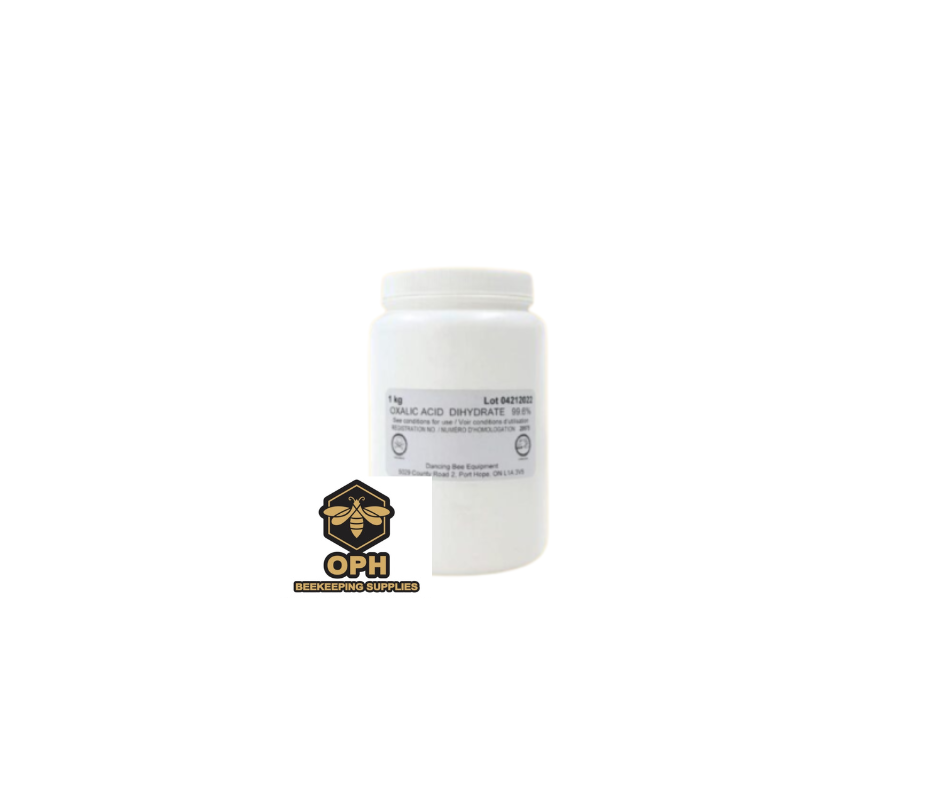
Oxalic Acid Dribble Method: A Practical Guide for Beekeepers
Share
Oxalic Acid Dribble Method: A Practical Guide for Beekeepers
Controlling varroa mites is one of the most critical aspects of beekeeping, as these parasites pose a significant threat to honey bee health. The oxalic acid dribble method is a popular and effective treatment used to combat varroa infestations, especially during periods when brood production is minimal. Here’s a detailed guide to understanding and using this method.
What is Oxalic Acid?
Oxalic acid is a naturally occurring organic compound found in many plants, such as rhubarb and spinach. It has proven to be highly effective as a mite treatment when applied properly, without causing long-term harm to honey bees or leaving significant residues in honey.
How the Dribble Method Works
The dribble method involves applying a solution of oxalic acid and sugar water directly onto the bees clustered on the frames. The bees groom themselves and each other, distributing the acid throughout the colony, which kills varroa mites on contact. This method is most effective when there is little or no brood, as oxalic acid does not penetrate capped cells where mites may be hiding.
When to Use the Oxalic Acid Dribble Method
- Late Fall or Early Winter: After most brood has emerged, making it easier to target exposed mites.
- Early Spring: Before significant brood production begins, allowing for effective mite control.
- As Part of an Integrated Pest Management (IPM) Plan: Used alongside other mite control strategies for comprehensive protection.
Preparing the Oxalic Acid Dribble Solution
The standard recipe for the dribble method is:
- 35 grams of oxalic acid dihydrate
- 1 liter of warm water
- 1 kilogram (1:1 ratio) of granulated sugar
Mixing Instructions:
- Dissolve the oxalic acid dihydrate in warm water.
- Add sugar and stir until fully dissolved.
- Store the solution in a labeled container and use it within a few days.
How to Apply the Dribble Method
- Wear Protective Gear: Use gloves, goggles, and a respirator to avoid contact with oxalic acid.
- Prepare the Hive: Open the hive gently to minimize disturbance.
- Dribble the Solution: Using a syringe or applicator, dribble 5 milliliters of solution per frame of bees, distributing it evenly over the top bars.
- Limit to One Treatment: Do not exceed one application per season using the dribble method to avoid harming the bees.
Benefits of the Dribble Method
- Cost-Effective: Requires minimal equipment and materials.
- Easy to Apply: Straightforward process with quick results.
- Highly Effective: Can achieve a significant reduction in varroa mites when used at the right time.
Limitations and Precautions
- Brood Presence Reduces Efficacy: The dribble method targets mites on adult bees but does not affect those inside capped brood cells.
- Temperature Considerations: Avoid treating in extremely cold conditions to prevent stress on the bees.
- Bee Health Impact: Excessive or repeated use can harm bees, so follow dosage guidelines carefully.
Conclusion
The oxalic acid dribble method is a proven, economical, and effective tool for controlling varroa mites. By applying it strategically during broodless periods and adhering to safety guidelines, beekeepers can significantly enhance the health and productivity of their colonies. Incorporating this method into a comprehensive mite management plan ensures better long-term outcomes for bee populations.
